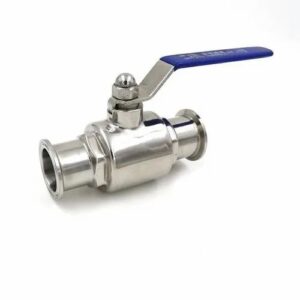Ball valves are crucial components in many industrial processes, controlling the flow of liquids and gases with remarkable efficiency. The precision and consistency required in their manufacturing are paramount, as any deviation can result in operational inefficiencies or even failures. This article explores the methodologies and practices ball valve manufacturers use to ensure each product meets the highest standards of quality. Manufacturers invest heavily in advanced computer-aided design CAD systems to develop detailed, accurate models of their ball valves. These designs must meet rigorous specifications to handle various pressures, temperatures, and flow conditions. Engineers also conduct simulations and stress tests to ensure that the valves will perform reliably under real-world conditions.
Material Selection
The choice of materials is crucial in achieving consistency and durability in ball valve manufacturing. High-quality materials like stainless steel, brass, and various alloys are selected based on their strength, corrosion resistance, and suitability for specific applications. Manufacturers often use material testing procedures to confirm that the selected materials meet industry standards and can withstand the operational demands of the end-use environment.
Precision Machining
Once the design and materials are finalized, the Dombor manufacturing process begins with precision machining. CNC Computer Numerical Control machines are employed to cut and shape the valve components with high accuracy. These machines are programmed to follow exact specifications, ensuring that every component, from the ball to the seat, is produced to tight tolerances. The use of advanced machinery minimizes human error and maximizes consistency across batches.

Quality Control
Quality control is a cornerstone of ball valve manufacturing. Each valve undergoes rigorous inspection at various stages of production. This includes visual inspections, dimensional checks, and performance testing. Manufacturers often use sophisticated equipment such as laser scanners and coordinate measuring machines CMMs to ensure that each component adheres to the design specifications. Additionally, pressure testing is conducted to verify that the valves can handle the maximum operating pressures they are rated for without leaking.
Assembly and Testing
The assembly process is a critical phase where precision and consistency are paramount. Components are meticulously assembled using standardized procedures to ensure that each valve operates smoothly. After assembly, the valves are subjected to functional tests to verify that they perform correctly. This may involve testing for leakage, flow rate, and operational ease to ensure that the valve functions as intended in a variety of scenarios.
Continuous Improvement
Ball valve manufacturers are committed to continuous improvement in their processes and products. They regularly review and refine their manufacturing techniques based on feedback from customers and advancements in technology. This commitment to ongoing improvement helps to maintain high standards of precision and consistency, adapting to changing industry needs and technological developments.
The precision and consistency of ball valve manufacturers are achieved through a combination of advanced design and engineering, careful material selection, precise machining, rigorous quality control, and adherence to industry standards. By integrating these practices into their processes, manufacturers ensure that each ball valve not only meets but exceeds the expectations of reliability and performance required for critical applications.